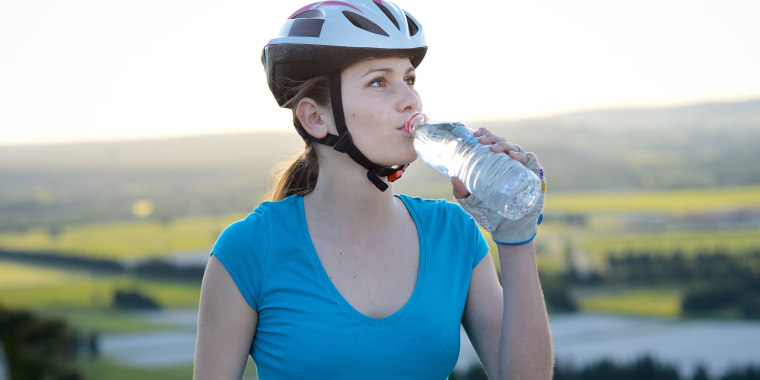As your teen leaves high school, they are nearing the end of their physical maturation. Some may continue to grow for a few more years and some may not. Regardless of their physical development, there are a unique set of physical health recommendations and risks for young adults. Knowing what these are and encouraging your teen to continue healthy behavior even after they’ve left high school can help set them on a path to a healthy adulthood.
Physical activity
The routine disruption of changing schools, starting a career or moving can have an impact on how much activity young adults get, but regular physical activity and exercise is essential for them. Not only is it key to leading a healthy lifestyle, it also reduces the risk of obesity and chronic diseases, such as diabetes, hypertension, heart disease, and certain cancers. Physical activity can also be a helpful way of dealing with the stress many young adults feel as they transition to college or career. Exercise can also improve mood, lead to better sleep, help with weight management, and be an opportunity to meet new people and make new friends.
The U.S. Department of Health and Human Services (HHS) recommends that adults get at least 2 hours and 30 minutes of moderate aerobic activity each week – or one hour and 15 minutes of vigorous activity each week – to have substantial health benefits. For even more health benefits, HHS recommends adults increase the amount of time from two hours and 30 minutes to five hours of aerobic activity a week.
What is moderate aerobic activity vs. vigorous activity?
- Moderate activity will get your heart rate up, have you breathing heavily, but you’ll still be able to talk while performing the activity. This can include walking quickly, hiking, playing volleyball or basketball, or riding a bike on a flat surface.
- Vigorous activity raises your heart rate substantially and you’ll be more out of breath, likely only able to say a few words before needing to pause for breath. This can include running, jumping rope, playing hockey or football or riding a bike on hills.
Building muscle
HHS also recommends that adults do muscle-strengthening activities two or more days a week that involve major muscle groups, like legs, back, stomach or arms. The benefits of building muscle are increased bone strength and overall physical health. Having more muscle can increase metabolism, which means better weight control, and having healthy bones and muscle can prevent osteoporosis later in life. Activities like lifting weights, doing push-ups or sit-ups or yoga can all be ways to build muscle.
Sleep
Though their schedules may be even more hectic than they were in high school, it is important for young adults to try to prioritize sleep. Experts stress that adequate sleep is as important to a healthy lifestyle as a balanced diet and physical activity. Many young people forego sleep for studying, working, or having fun with friends. But this lack of sleep can negatively affect their ability to concentrate and increase their likelihood of sustaining an injury if they’re playing a sport.
Sleep needs do not drop significantly as your teen matures even though they may even sleep less. The National Sleep Foundation recommends that young adults sleep seven to nine hours every night. That means if they’re up for class at 8 a.m., they should go to bed between 11 p.m. and 1 a.m.
Sexual health
According to the Centers for Disease Control and Prevention (CDC), half of all new sexually transmitted infections occur in people under the age of 25. It’s important for young people to practice safe sex and to get tested regularly for sexually transmitted infections. They should know how to access birth control and the methods for preventing STIs, like condoms or other barrier methods. Kansas City-based pediatrician Dr. Natasha Burgert recommends that parents ensure their kids know the family’s values on birth control and know how to access sexual health providers. She also recommends females keep a menstrual calendar, as the stress from classes and changes during the first few years out of high school can affect the cycle. If there is an issue, a healthcare provider will want to know that information.
Sexual assault is also a risk young people face. In fact, according to the CDC, 37% of female rape victims were first raped between the ages of 18 and 24 years. As difficult as it may be, have a conversation with your young adult about consent to help prepare them for situations that may arise during this age.
Vision
It may not be at the top of the priority list for many young adults, but eyesight can change during this time as well. An annual trip to the eye doctor is one way to track any changes in existing prescriptions or perhaps a new prescription. Dr. Burgert notes that especially for college students, the increased eye strain from the demands of their studies can contribute to the need for vision correction.
Peer reviewed by Dr. Bobbi Wegner, Clinical Psychologist, Boston Behavioral Medicine; Michele Borba, Author and Educational Psychologist; and Dr. Nicole Green, Executive Director of Counseling and Psychological Services, University of California Los Angeles.
